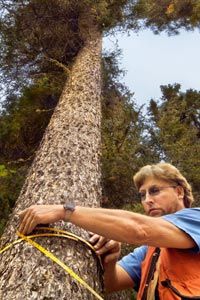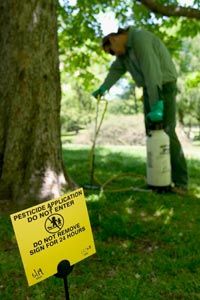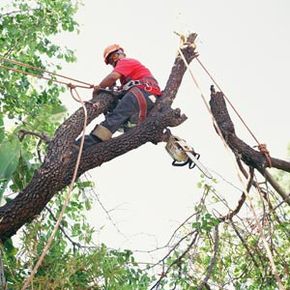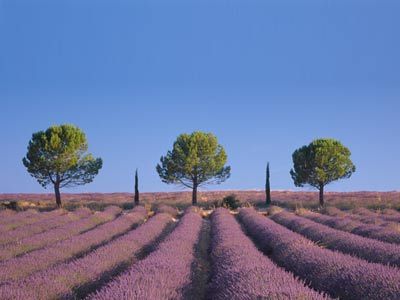Whether you're in small town with forests that spread for miles or a large, developed city with arboreal parks, it's easy to see that people have strong connections with the trees in their areas. They provide us with shade from the hot sun during the summer months when their leaves are full, and trees planted next to a home can reduce air conditioning costs by as much as 15 percent [source: International Society of Arboriculture]. During the winter months, when trees lose their leaves, they let sunlight in to warm our homes. Depending on the type of trees you select to plant around your home, they may even be able to act as wind obstructions, blocking cold, blustery weather.
Large groups of tree in cities can reduce what's called the "heat-island effect," the significant warming that comes from replacing large areas of natural land and vegetation with buildings, roads and asphalt. The temperature around a shade tree is significantly cooler than the temperature around a parked car, and several trees planted over a stretch of sidewalk can give shade and reduce reflected heat.
Advertisement
Our breathing processes are also mutually beneficial -- while we breathe in oxygen and expel carbon dioxide, trees take in carbon dioxide and produce oxygen. Their leaves can also filter out pollutants from the air.
Trees can also make your real estate more attractive and possibly increase the price of your home if you're looking to sell. Which brings us to the most basic aspect of our relationship: Trees are a pleasant sight to take in, and we simply enjoy admiring them for their beauty.
Keeping trees healthy is difficult, however, and not everyone has the skills to take care of them properly. Doing so usually involves dangerous climbing and hazardous situations. That's why it takes an arborist, a certified specialist in taking care of trees, to look after trees. Read on to learn about what an arborist does.
Advertisement




